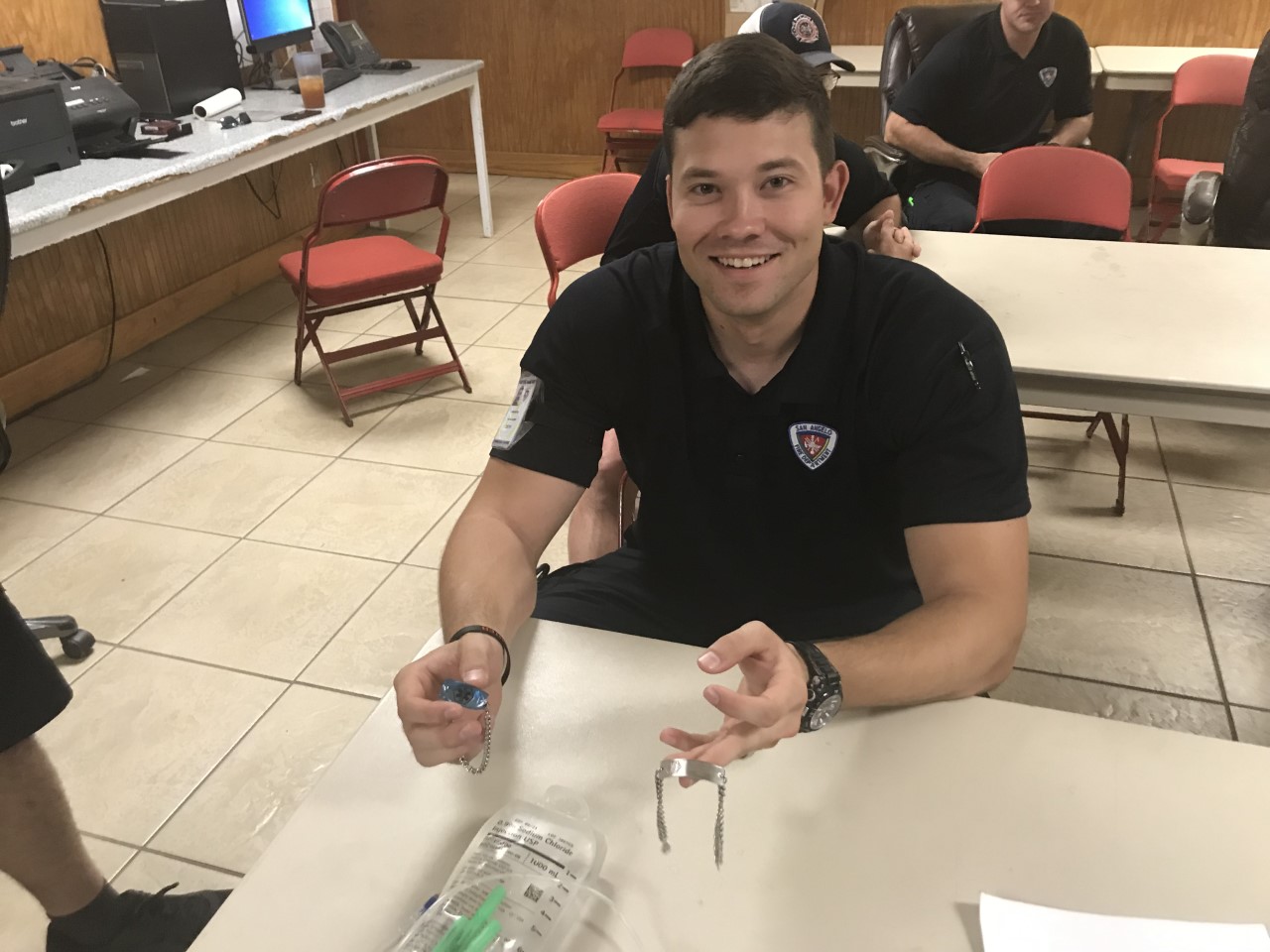
April is
National Autism Awareness Month! This month, we’re one with the autism community in encouraging companies and individuals alike to embrace a neurodiverse workplace that includes employees with autism and to learn how to effectively support them.
Autism Spectrum Disorder (ASD) is a “spectrum” disorder, which means that it affects each individual differently. There is not one singular description for all people with ASD and, in turn, strategies for supporting employees with ASD can vary.
1
People of all walks of life strive to find meaningful employment that they are both challenged by and enjoy. Employees with autism feel the same way! Persons with autism may require unique support or arrangements in order to succeed.
Embracing a neurodiverse and autism-friendly workplace could mean providing support and education for all employees. This will help employees with autism be successful and their peers gain a better understanding of the challenges associated with ASD.
10 Ways to Embrace an Autism-Friendly Workplace
- Understand sensory sensitivitySensory issues are often associated with autism. This can include both hyper-sensitivities (over-responsiveness) and hypo-sensitivities (under-responsiveness) to various stimuli. For example, employees on the spectrum may be sensitive to fluorescent office lights or feel uncomfortable with certain physical sensations.2 Employees with autism could benefit from a dedicated work area to avoid potential sensory stressors and make them feel at ease. This will ensure that they are set up to work in a comfortable environment that helps them succeed.
- Educate to encourage positive social interaction
Individuals on the autism spectrum may experience, express, and interpret feelings in a different way than those without autism. People with autism can also experience difficulty in identifying social cues, which can come across as socially inappropriate at times.3 It’s important to train all employees to understand how autism may affect social interaction and communication in order to better understand a coworker with autism and help avoid potential conflict in the future.
- Appoint a mentor to support an employee with autism
Every person with autism is different and therefore requires different types of support. Consider appointing an experienced mentor to help instruct an employee with autism on the rules, expectations, and culture of the company. They can also serve as a liaison to introduce the employee to other team members and assist with any communication challenges.
- Enlist an organization to provide training on autism in the workplace
It’s vital for both managers and fellow employees to understand how to best support an employee with autism. This includes being aware of the various challenges that people with autism can face and how the team can best help and support them. Organizations such as the National Autism Association or Autism Speaks can be great resources to offer support and guidance for a neurodiverse workplace.
- Get to know your employees
Understand what each employee can offer and what accommodations they may need in order to succeed. Each individual will have certain abilities to perform various jobs that may or may not require accommodations. For example, some roles could be ideal for individuals who enjoy repetitive tasks, while others may find them monotonous. This is applicable to all types of employees! Getting to know what each person needs to succeed and put forth their best effort is key to creating a supportive work environment.
- Embrace each employee’s abilities
Engage your employee to let them communicate what they are capable of. Some employees may not exhibit outward signs of autism, so it’s important to understand how each employee and candidate can meet the essential functions of the job.
- Evaluate essential functions of each roleManagers should think about how they can accommodate employees with autism who may be on different parts of the spectrum. An important step is presenting a clear job description to understand the essential functions and expectations for each role. Be sure to always consult with HR and evaluate the need for accommodating individuals with any form of disability on a case-by-case basis.4
- Be open to reasonable compromise
In the event that an employee with autism requires adjustment, be flexible in helping them do their best work. As Insperity points out, providing facilities for an employee with ASD is similar to changes you might make for other employees, like providing standing desks to decrease back pain.4 Examples of reasonable accommodations for those with ASD could include providing a specific daily schedule, allowing the employee to wear noise-cancelling headphones, or permitting them to work from home.
- Provide clear directions and feedback
Communication is key to managing any employee, and those with autism are no different. It’s important to speak in a clear and consistent manner and designate specific tasks to help an employee with autism understand tasks or questions at hand.5 As time goes on, be sure to offer direct yet sensitive feedback so that your employee can properly understand where they have excelled and where they may need to improve.
- Promote kindness
Above all, promote kindness within the workplace and beyond. When you encourage a culture of kindness, you help ensure that each and every employee is treated with respect regardless of any disabilities or accommodations they may require in order to succeed. Consider providing sensitivity training for your team to help understand how to work most effectively with coworkers with ASD who may require adjustments in the workplace and continue to promote equality, diversity, and respect.
Beyond the Workplace: 24/7 Support for ASD
There are multiple forms of autism, many which do not display visible symptoms. Since autism is an ‘invisible’
medical condition, it’s recommended that a medical ID be worn by individuals with all forms of autism disorder. A
medical ID for autism will help medical providers and responders in an emergency.
Building a Better Future
About 1 in 59 children in the U.S. is identified with ASD.
6 As these children grow up and enter the workforce, it’s important to have established many neurodiverse and autism-friendly spaces in which individuals with ASD can thrive.
According to Dianne Malley, director of the Life Course Outcomes’ Transition Pathways initiative at Drexel University, “People on the autism spectrum have multiple and varied skills to contribute to the workplace, and businesses can experience a strong return on investment by supporting greater diversity.”
7
In honor of National Autism Awareness Month, we encourage you to follow these tips and do some of your own research in order to embrace a diverse and autism-friendly workplace.
Are you an individual with ASD who works in a neurodiverse work environment? Have you been employed in an autism-friendly workplace? We’d love to hear your story! We welcome you to contact us or to share your story in the comments.
Sources
- Employer Guide to Supervising Individuals with Autism Spectrum Disorder (ASD), RIT
- Sensory Issues, Autism Speaks
- Autism in the workplace, FitforWork
- 5 ways to embrace autism in the workplace, Insperity
- Understanding Autism: An Employers Guide (downloadable PDF), Research Autism
- Data & Statistics on Autism Spectrum Disorder, Centers for Disease Control & Prevention (CDC)
- What Autistic People Need to Succeed in the Workplace, Spectrum New
 April is National Autism Awareness Month! This month, we’re one with the autism community in encouraging companies and individuals alike to embrace a neurodiverse workplace that includes employees with autism and to learn how to effectively support them.
Autism Spectrum Disorder (ASD) is a “spectrum” disorder, which means that it affects each individual differently. There is not one singular description for all people with ASD and, in turn, strategies for supporting employees with ASD can vary.1
People of all walks of life strive to find meaningful employment that they are both challenged by and enjoy. Employees with autism feel the same way! Persons with autism may require unique support or arrangements in order to succeed.
Embracing a neurodiverse and autism-friendly workplace could mean providing support and education for all employees. This will help employees with autism be successful and their peers gain a better understanding of the challenges associated with ASD.
10 Ways to Embrace an Autism-Friendly Workplace
April is National Autism Awareness Month! This month, we’re one with the autism community in encouraging companies and individuals alike to embrace a neurodiverse workplace that includes employees with autism and to learn how to effectively support them.
Autism Spectrum Disorder (ASD) is a “spectrum” disorder, which means that it affects each individual differently. There is not one singular description for all people with ASD and, in turn, strategies for supporting employees with ASD can vary.1
People of all walks of life strive to find meaningful employment that they are both challenged by and enjoy. Employees with autism feel the same way! Persons with autism may require unique support or arrangements in order to succeed.
Embracing a neurodiverse and autism-friendly workplace could mean providing support and education for all employees. This will help employees with autism be successful and their peers gain a better understanding of the challenges associated with ASD.
10 Ways to Embrace an Autism-Friendly Workplace





